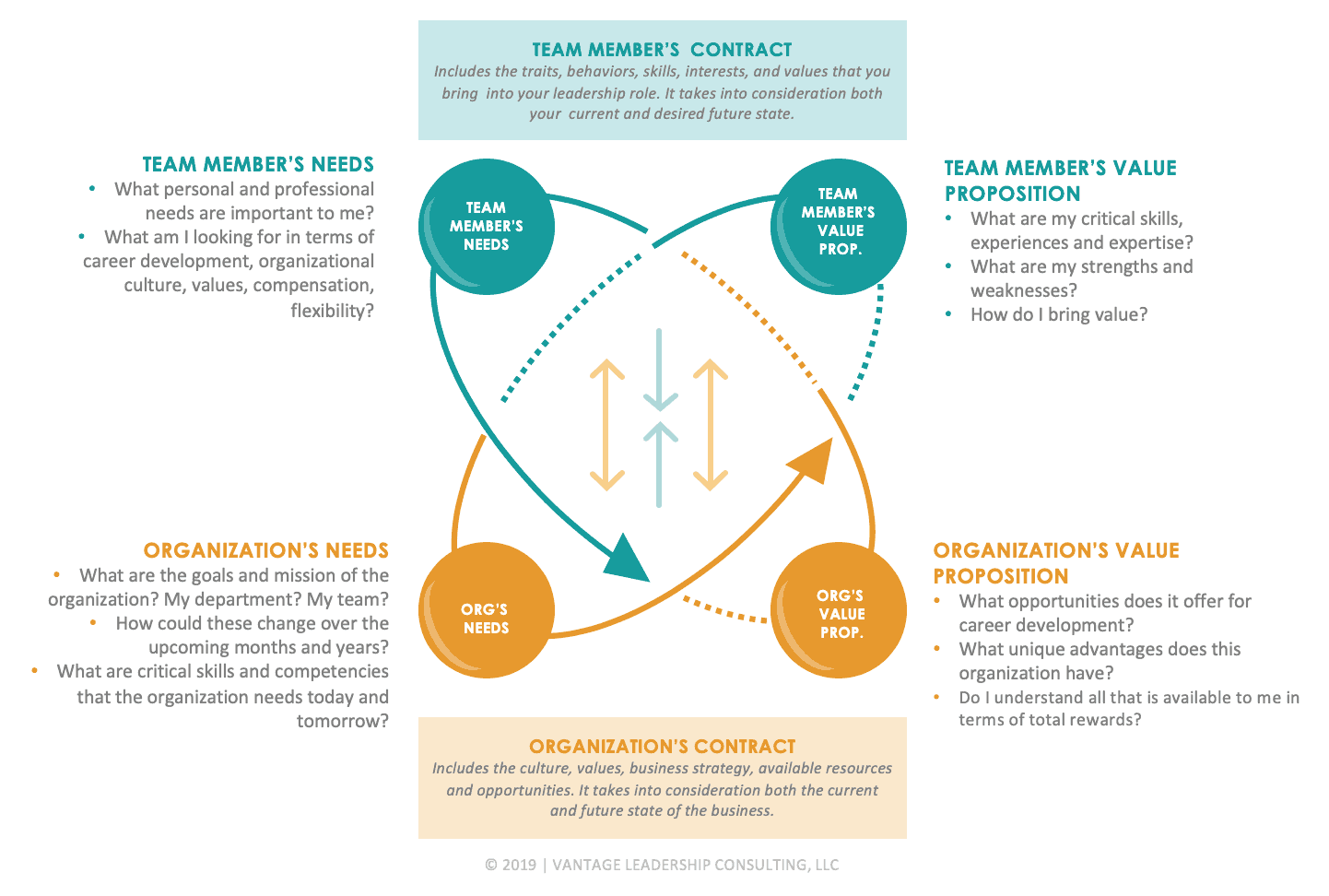Leadership coaching is a sought-after element of the leadership development process, but the framework that underpins it is all too often incomplete – or inconsistently applied from one engagement to another. It typically focuses on what the organization requires from the leader, but falls short by failing to consider the individual needs of the leader and the myriad ways the organization connects with its most critical resource: its people.
Over the past several years I have been coaching Rachel, a high-potential leader who was seen as a successor candidate to the executive leadership team. Each time she would reach out to start another coaching engagement, we worked through a similar process: gather and analyze recent data and feedback, build a development plan and then monitor that plan over a six- to twelve-month timeframe. Her most recent request, however, was different.
Rachel had just been promoted. Her promotion was an important acknowledgement of her contributions and a career milestone, indicating she was on track to join the executive leadership team in the future. To kick off the engagement, I met with her new boss, the COO. I assumed this would be a typical information-gathering meeting: get an update on the business’ performance, discuss goals for the coming year, and determine mission-critical priorities for Rachel’s transition to her new role.
The COO asked a provocative question, “Where does Rachel want to be in her career in five years, and how can I help her get there? Many perceive her to have considerable potential, but I know very little about her. Help me help her.”
Framework for a Different Coaching Process
Although I had known Rachel for years, our coaching had always focused on optimizing her skills in her current role and helping her prepare for the next promotion. She and I had never explicitly discussed her “five-year plan” and what she needed to feel personally fulfilled and professionally challenged over the long term.
As a result of the COO’s provocation, I decided to use Vantage Leadership Consulting’s Accelerated Development Model to trigger both deeper reflection and self-exploration, and illuminate what was really going to be important for her and the organization in the future.
The Accelerated Development Model, pictured below, uses four different but integrated areas of inquiry to help the participant understand her needs and value proposition, and how they balance with the organization’s needs and value proposition.

First, the participant gets a deeper understanding of her personal and professional needs (the Team Member’s Needs) and reflects on the value she brings to the organization (the Team Member’s Value Proposition). The model then asks the leader to consider the organization’s requirements (the Organization’s Needs) and employment offer (the Organization’s Value Proposition).
Once each area has been illuminated, the participant analyzes the tension between the four areas. The goal in going through the Accelerated Development Model is to help the coaching client create a robust developmental plan that considers alignment and gaps between the Team Member’s Needs and the Organization’s Value Proposition on the one hand, and the Organization’s Needs and the Team Member’s Value proposition on the other.
Putting the Accelerated Development Model into Action
I believed it would be critical for Rachel to dive deeper and take these factors into account as she charted her developmental trajectory over the next several years. Since Rachel admittedly did not know where she wanted to be in five years, I introduced her to the Accelerated Development Model to ensure her needs were accounted for in both the coaching process and future succession plans.
The Team Member’s Needs are not limited to financial concerns, which are certainly an important component, but also includes the leader’s motivational drivers, work/life integration, learning goals, and desire to achieve.
Using the model encourages consideration of the whole person and what she requires over the long term. Whereas more traditional development planning tends to focus on the employee cultivating skills to meet the shorter-term needs of the organization, the model forces a broader perspective. As result, working through the Accelerated Development Model allowed for a more balanced, robust and self-reflective developmental process. It also gave Rachel structure to be confident in clearly stating what she needed from a new boss with whom she had minimal prior interaction.
Rachel and I spent several meetings working through her answers to the four areas of the model. Rachel’s homework between sessions probed for what would both accelerate her development and create a sustainable ‘contract’ between her and the organization. In other engagements, I’ve used assessment tools as well as homework (including 360s, online assessments, and behavioral interviews) to help my clients populate the Team Member Contract. For Rachel, she had enough external assessment input to pull from, and conversation and prompts were enough.
The model challenged Rachel to address some important questions:
- What do you need to do differently to stay ahead of the constantly-changing needs of your employer and the marketplace?
- What do you need from your organization and leadership team to meet your own evolving needs?
- What do you need to adapt or modify in order to deliver the kind of value required in a chief officer role? How does that align with your values and need for personal fulfillment? What additional roles beyond your current position would be most interesting and broaden your existing experience in meaningful ways?
- How can we integrate the answers to these questions to create balance and mutual success between you and the organization?
This reflective exercise triggered important conversations in our coaching dialogue regarding Rachel’s learning, financial goals, need for autonomy, and the importance of maintaining work-life balance. While working through the model helped her clarify what she would need to feel motivated and challenged in her next role, it also fostered an honest discussion of what the organization would offer and require of her to be successful – and, most importantly, fully engaged.
Following a gap analysis between her needs and the organization’s value proposition, and her value proposition and the organization’s needs, she organized themes and points of discussion into a simple one-page summary. We then met with the COO to discuss her learning, clarify questions regarding organizational expectations and value proposition, and chart a development trajectory for the next several years. Rachel also identified a targeted mentoring relationship and two potential senior level roles that were aligned with what she needed for professional growth.
The Impact of Using the Accelerated Development Model
There were two critical outcomes from this process. After Rachel walked the COO through the output of her reflective journey and discussed the implications for her career planning, the three of us had a robust discussion. The COO loved the model and its impact, mentioning, “In my fifteen-plus years of working with executive coaches, I have never seen such a thoughtfully construed and constructed development plan.” He described the entire experience as “eye opening” and said that he felt better positioned to support this important talent in realizing her full potential.
Secondly, the Accelerated Development Model created the opportunity for transparency by surfacing potential issues in a constructive manner and allowing Rachel to be open and honest in terms of her interests, needs and concerns. It’s unlikely that any of these issues would have surfaced naturally in their check-ins, or in such a structured and mutually beneficial way.
Ignoring or diminishing the needs of the individual in the leadership development process can result in a truncated or less-than-impactful development experience. As a result, the financial return of such efforts is at risk of falling short of the investment.
The Accelerated Development Model is a pragmatic tool that helps managers and their direct reports ask and answer important questions. As a coaching framework, the model brings a balanced focus to creating and implementing an engaging development plan that ultimately benefits both the individual and the organization.
Tell us about your experiences with leadership development, either as a coach or a participant. Do you have a model you rely on? What have you found to be effective? Share in the comments below!
This post was co-written by Duncan Ferguson.

